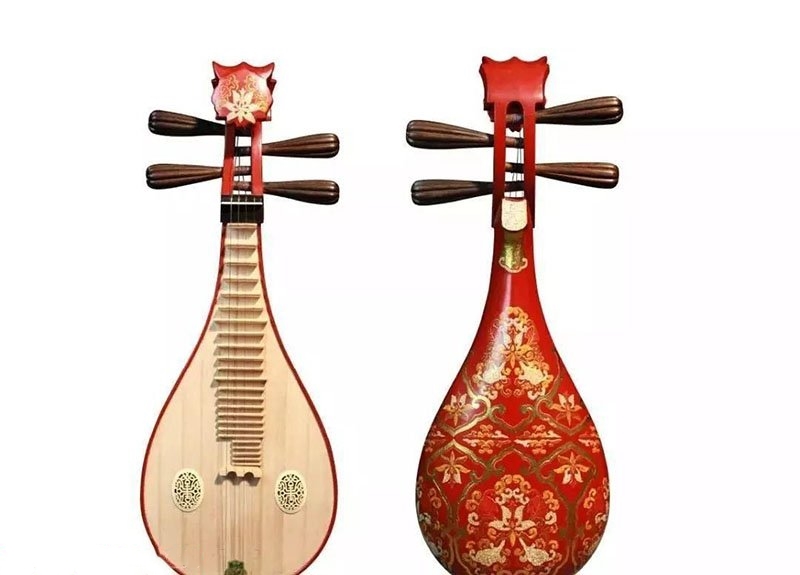The shape of the two-stringed liuqin
Before the appearance of the three-stringed liuqin in the 1950s, the two-stringed liuqin was used in the accompaniment of local operas such as the Liuqin Opera in Shandong and Jiangsu, and the Sizhou Opera in Anhui.

The two-stringed liuqin has a large body and is made of willow wood. It is simple and rough, with only two silk strings and seven frets made of sorghum rods. The sound range is very narrow, only one and a half octaves. When playing, a bamboo tube is placed on the index finger, pinched with the thumb, and plucked by the wrist to strum the strings. This kind of liuqin can still be seen in the folks of Tengzhou and Xuzhou, Jiangsu.
At this time, the liuqin has been used for a long time in the accompaniment of local operas such as Liuqin opera in Shandong and Jiangsu, and Sizhou opera in Anhui. Due to the shortcomings of the original liuqin, such as narrow range, inconvenience of tuning, and unpleasant timbre, the development of liuqin music has been greatly restricted, and it has become the goal of musical instrument reform for musicians for many years.
 渝公网安备 50010702504639号
渝公网安备 50010702504639号